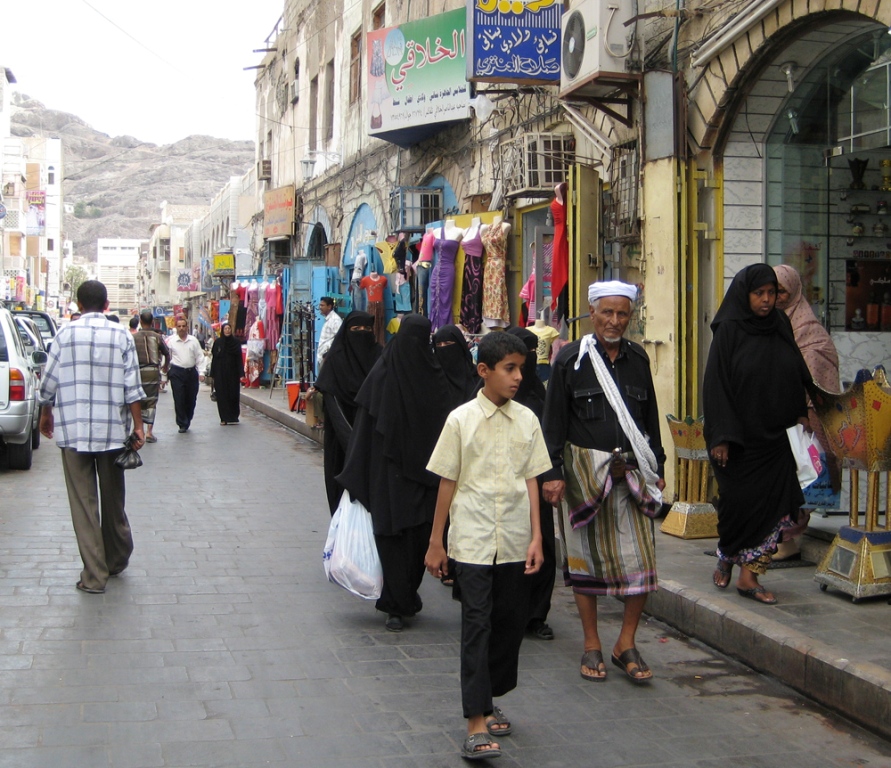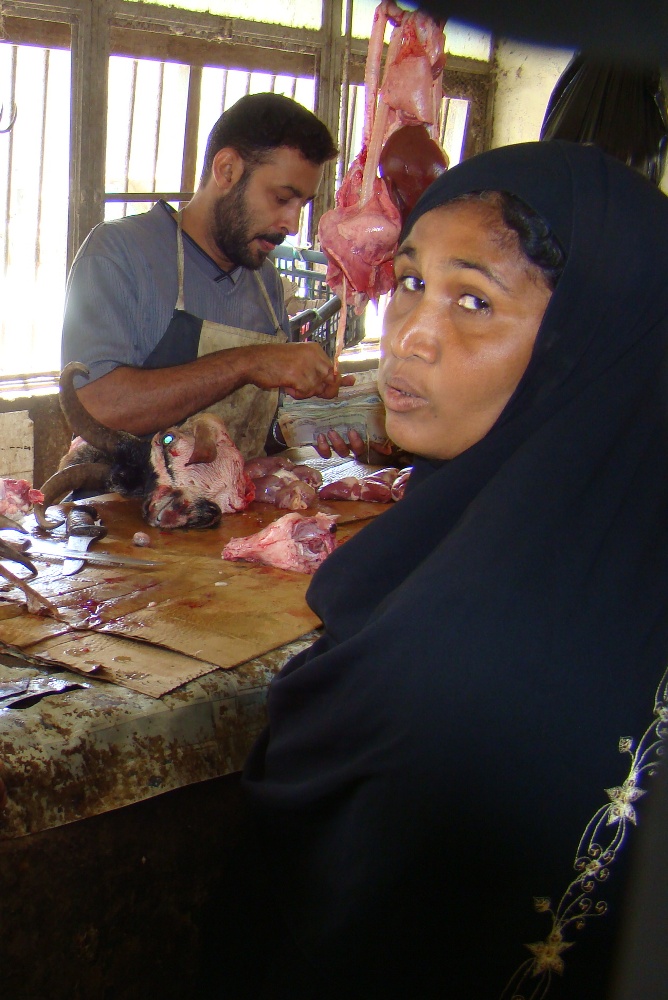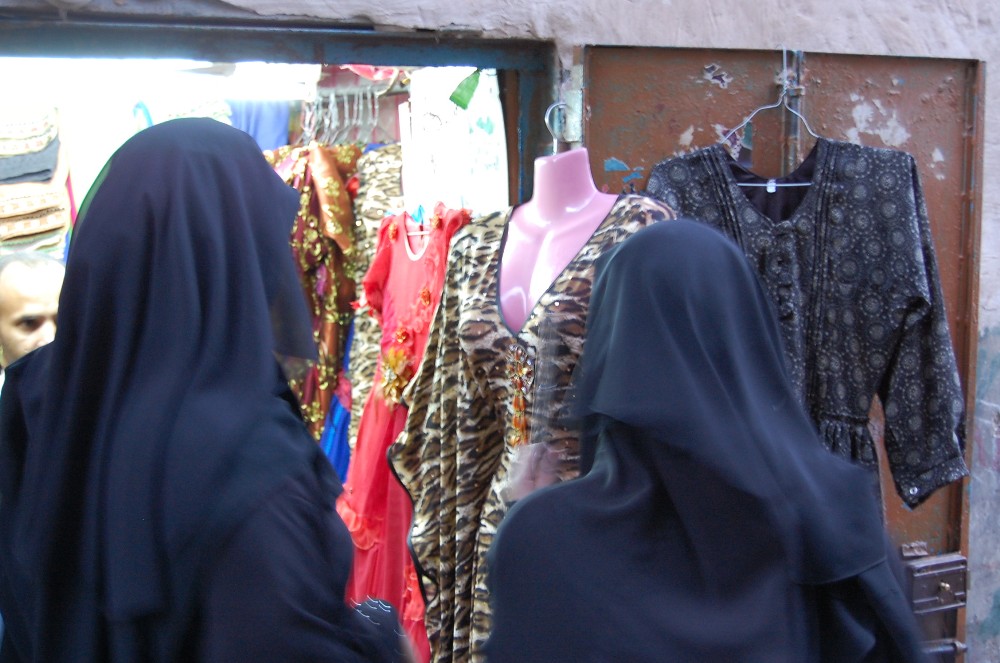First to briefly explain the “country” of Yemen. Like almost all the Middle East, South Asia, and Africa, these pseudo or imagined countries were created by Western powers and boundaries drawn for their uses—nothing to do with ethnic or local socio-political divisions. Such artificial divisions forced on these areas are one of the foundations for so much unrest today.
In 1967, Britain finally gave South Yemen her independence after a bloody rebellion against colonial rule. Both the North and the South managed reasonably well for a while, but various factors, including external ones, brought turmoil, unrest, and more civil war. The final result was the North took over the South, presumably “reuniting” the country, which had never really been united in the past. From our South Yemeni friends we learned they are biased against the Northerners, whom they find conservative, rural, and unsophisticated.
But back to women, Yemen, and qat.
Common Yemeni city street scene.
With control by the more conservative North, all Yemeni women became ninjas, a term I certainly didn’t make up. It was a local South Yemeni joke. Ninjas are the black-burqa-covered women with just their eyes showing, sometimes not even that if they wear veils. Before the country was “united,” many South Yemeni women did not wear the conservative Islamic dress, but now all women are required to wear it, although a few do not cover their faces.
Yemeni woman shopping in the fish market.
While walking with another female cruiser in Aden and Sana’a, we were often stopped by young ninjas, who giggled and asked where we were from and other typical questions. Also, as a woman I quickly learned to see the smile in their eyes if they looked at me in passing, but they would not, of course, look at or talk to a man. But what they wear at home is quite a different matter. Imagine a gaudy Victoria’s Secret. These little risqué garment shops were everywhere, displaying leopard-patterned bikini underwear and more formal long dresses with gold trim, sequins, and low décolletages. It was an ironic picture to see black burqa-covered women eyeing these racy, seductive garments in store windows.
Yemeni women window shopping. Photo courtesy of my friend and fellow cruiser, Lillian Duckworth, S/V Tagora.
In the past, peasant women traditionally took care of livestock and family crops. Without the crops, the livestock can’t survive; without either, the women have no role and are deprived even more. Yemen does not have an honorable record for its women to start with: 71 percent are illiterate; they can be married as young as nine; they are often arrested for “immoral acts” and never tried, just thrown in prison and forgotten; they often die in childbirth as they are given little medical attention; they are the property of men. Ancient tribal laws often govern the way women are treated in rural areas. In many areas these laws have become incorporated into Islamic practices [although that is not where they originated].
Yemeni woman with her sheep in the countryside.



